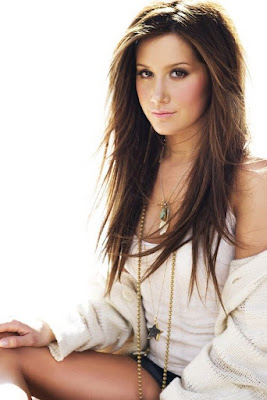The range of hairstyles available to women began to expand as the world entered a new century in 1900. The Victorian Age was drawing to a close, the automobile was emerging, giving people much more mobility, and a general sense of unlimited possibilities pervaded society. All of this gave a new impetus to creating hairstyles that expressed a more open and optimistic feeling.
1900-1910 Hairstyles - Time of Transition
This decade saw a transition in hairstyles, from the more confined styles of the Victorian era to looser, fuller hairstyles. Curiously, both long and short styles were popular, with longer, free-flowing hair slowly gaining more converts as the decade progressed. Volume was the theme that ran through most of the popular hairstyles, regardless of hair length. Longer hairstyles featured hair parted in the middle (with a noticeable part), and long wavy tresses hanging below the shoulders. Shorter hairstyles generally began around the ears and 'poofed' up over the head in several updo styles, often held in place with barrettes and adorned with bows, or large, wide hats.
1910-1920 Hairstyles - Waves & Accessories
As the 1900s moved into the 1910s, hairstyles started off with an emphasis on long hair that was either pinned up in elaborate updos, or made wavy and flowing. Hats and bows were increasingly popular accessories. Nevertheless, in the mid-1910's, a sea change occurred that would affect women's hairstyles for years to come. This was the short bob haircut.
As these very short styles caught on and swept America, the range of elegant hairstyles for formal events and nights out on the town diminished. The focus shifted to what women put in their hair. The most popular accessory was a headband, often adorned with fancy beads and stitch-work designs. One hairstyle that gained a lot of popularity (and some notoriety) was called "curtain hair." This entailed parting short hairstyles down the middle, then letting the hair fall across a headband worn around the middle of the head, just above the ears. For more elegant hairstyles, women often constructed ringlet curls all along the headband, or added jeweled pins.
1920-1930 Hairstyles - Footloose & Fancy Free
The 1920s was a decade of huge societal changes in America. Women got the right to vote, a world war had just ended, hard liquor was banned, and the economy was booming as industry titans emerged. A unique time in the history of hairstyles, the 1920s saw the birth of the 'Flapper' era, highlighted by women with very short hair, bold new fashions, and a carefree attitude.
First noticed on famous ballroom dancer, Irene Castle, the 'Castle bob' swept the nation in the late 1910s and early 20s. Variations sprang up as the 1920s progressed, a result of women who began feeling their wild oats and experimenting with newfound freedoms of expression.
Formal hairstyles in the 1920s were often limited by the extremely short styles that were so popular then. To make up for this limitation, many women chose to wear wide-brimmed hats with elegant designs and bands. They wore their hair in very simple styles as a result. When a hat was not practical for a particular formal event, women often used curls and mini-updos to accentuate hairstyles that were crafted from rather plain-looking everyday styles.
The times always have an effect on fashions and hairstyles, regardless of the era. In just three decades, from 1900-1930, America went from very conservative styles as the Victorian era was ending, to the wild-eyed, carefree days of short Flapper hairstyles. All of which proves that it's impossible to look at current hairstyles and fashion trends and make anything more than a wild guess as to where things will be in a few years. We'll just have to wait and watch.













No comments:
Post a Comment